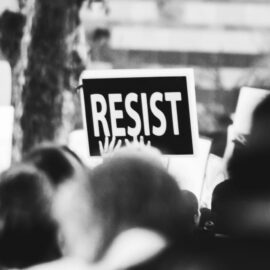
How can we understand body language across cultures? Can you make sure that your use of body language is culturally sensitive?
Body language customs are different across cultures, especially in reference to levels of appropriate eye contact and the use of hand gestures. By understanding these differences, you can become more aware of how you’re coming across to others.
Read more about the differences between body language cues across cultures.
How Is Body Language Different Across Cultures?
There are many differences in body language across cultures. Some cultures might display more intimacy than others, such as through hugs and physical touch. If you aren’t aware of this context and come from a culture where this isn’t the case, you might interpret this tendency as overly familiar or indicative of a lack of personal boundaries.
| Differences in Nonverbal Communication Across Cultures Several categories of body language often differ between cultures. Understanding these differences can help you avoid offending people from cultures different from your own. It may also help you understand why someone is displaying body language contrary to what you expect. Here are a couple of the most prominent cultural variations: 1. Level of eye contact. Conventions around eye contact differ widely between parts of the world. In Western countries, maintaining eye contact typically indicates confidence, respect, and interest—it’s viewed positively. However, in many Asian, Latin American, African, and North American Indigenous cultures, holding eye contact may be seen as adversarial or hostile. Additionally, people from those cultures may consider holding eye contact with elders and superiors rude. 2. Variation in hand gestures. The meaning of some communicative hand gestures also varies widely. Some gestures express a benign message in one culture but are highly offensive in another. For example, people use the thumbs-up sign in most of Europe and North America as an affirmative or an indicator that someone’s doing a good job. However, in the Middle East and Greece, it’s an insulting gesture of rejection or contempt. |
How to Read Body Language With Cultural Awareness
In The Dictionary of Body Language, former FBI agent Joe Navarro states that when you’re interpreting body language cues, it’s important to consider whether the action is ordinary or unusual for the person doing it. Culture is a big influence, as well as personality type and neurodivergence, which can influence how someone communicates nonverbally.
Personality: Someone who’s shy might naturally have more nervous or withdrawn body language compared to someone more outgoing.
Neurodivergence: You might interpret someone rocking their upper body back and forth as a sign of psychological distress. However, someone who’s neurodivergent may rock back and forth as a form of habitual self-stimulatory behavior (or “stimming”), which doesn’t necessarily indicate that they’re upset.
In The Laws of Human Nature, Greene also warns not to universally assign cues to certain emotions: Different people may use the same nonverbal cue to express different emotions. For example, one person may speak louder when they’re excited; another may do so when they’re upset.
Exercise: Examine How You Use Body Language
Now that we’ve discussed cultural context for body language, think about how it affects your own communication with others.
- What’s one personal context that affects your body language? (For example, maybe you grew up in a culture where it’s normal to hug people every time you greet them. Or, maybe you’re naturally shy, so you tend to have closed-off body language in public spaces.)
- How might this context affect how other people perceive you? (For example, some people might feel happy and comforted when you hug them, but others might find this gesture overly familiar. If people see closed-off body language, they may think you’re standoffish because they don’t know you’re shy.)
- Name one body language cue you’d like to use more to show people you’re open to friendship. Why did you choose this cue? (For example, maybe you want to smile warmly when you meet people so they feel welcome. Or, maybe you want to stand up straighter so people think you’re confident and want to approach you.)






